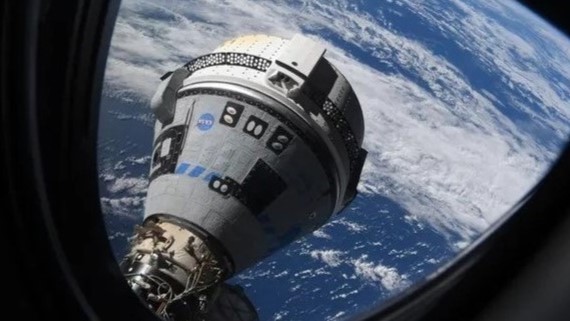NASA may send Starliner home without its crew — leaving astronauts stuck in space until 2025
NASA officials are considering returning the troubled Starliner spacecraft to Earth without its astronauts, potentially leaving them aboard the ISS until 2025.

The stranded Boeing Starliner spacecraft is now delaying SpaceX's planned Crew-9 mission to the International Space Station (ISS) — and NASA is considering scrapping the spacecraft's crewed return flight to Earth as more details about Starliner's malfunctions come to light.
The delay, which moves the launch of the Crew-9 mission from Aug. 18 to no earlier than Sept. 24, "allows more time for mission managers to finalize return planning for the agency's Boeing Crew Flight Test," NASA wrote in a blog update on Tuesday (Aug. 6).
The update has arrived at a fraught time for NASA and Boeing. The Crew-9 members, who are scheduled to replace the current Crew-8 aboard the ISS, cannot arrive at the station until a free docking port opens up. The preferred Harmony module is currently being occupied by the Starliner spacecraft, which has been stuck on the ISS since June.
There is still no return date for Boeing's spacecraft or its astronauts, who have now been on the ISS for months longer than anticipated. Engineers at NASA are now debating whether they should send Starliner to Earth uncrewed and take the astronauts home aboard a SpaceX vehicle in early 2025.
"I would say that our chances of an uncrewed Starliner return have increased a little bit based on where things have gone over the last week or two, and that's why we're looking more closely at that option" Ken Bowersox, associate administrator for NASA's Space Operations Mission Directorate, said at a news conference Wednesday (August 7). "But again, new data coming in, new analysis, different discussion — we could find ourselves shift in another way."
Isolating the issues
The problems began shortly after NASA astronauts Butch Wilmore and Sunita Williams rode to orbit in Boeing's spacecraft following years of project delays, successfully blasting off on Starliner's inaugural crewed flight from Florida's Cape Canaveral Space Force Station on June 5.
Sign up for the Live Science daily newsletter now
Get the world’s most fascinating discoveries delivered straight to your inbox.
Wilmore and Williams were scheduled to stay a week in orbit, but during the flight the Starliner suffered a series of issues, including five helium leaks and five failures of its reaction control system thrusters. This forced engineers to troubleshoot issues on the ground and has extended the two astronauts' stay aboard the ISS from the planned week to two months and counting.
NASA engineers say that they are taking more time to pick up data on the flight worthiness of Starliner and to iron out its faults. However, progress toward an eventual flight home has stalled. NASA expected to begin a flight-readiness review for the spacecraft at the beginning of August, but the process has yet to start.
Tests conducted by engineers at Starliner's facility in White Sands, New Mexico revealed that, during the spacecraft's climb to the ISS, the teflon seals inside the five faulty RCS thrusters likely got hot and bulged out of place to obstruct the propellant flow, according to NASA.
A hotfire test conducted while the craft was docked to the ISS on July 27 showed the thrust was normal, but NASA engineers are concerned the problem could reappear during the craft's descent back to Earth. They're also worried that the helium leaks could knock out some of the craft's orbital maneuvering and attitude control system (OMAC) thrusters, which maintain the spacecraft on its flight path.
"The worst case would be some integrated failure mechanism, between the helium leaks and the RCS thrusters," Steve Stich, the program manager for NASA's Commercial Crew Program, said at the news conference. "Then you could end up in some cases that aren't as easily controlled — more stressing cases that the team is worried about."
Among the reasons for the delay is that Starliner cannot autonomously undock from the ISS, a maneuver that is necessary if NASA decides the craft should return on its own without the astronauts on board, Ars Technica reported. Updating and validating the software needed to make this maneuver will take up to four weeks, sources told Ars Technica.
NASA said it has a number of contingency plans in place, one of them being sending only two out of Crew-9s four astronauts to the ISS so that Wilmore and Williams can return with them in February 2025.
But whatever NASA decides, the decision will need to come soon, Stich said.
"We need to probably decide likely in the middle of August one path or the other to go ahead and meet the launch date for Crew-9" on Sept. 24, he added.
Editor's note: This article was updated on Aug. 7 at 3:25 p.m. ET to include new quotes and information from a NASA press conference.

Ben Turner is a U.K. based staff writer at Live Science. He covers physics and astronomy, among other topics like tech and climate change. He graduated from University College London with a degree in particle physics before training as a journalist. When he's not writing, Ben enjoys reading literature, playing the guitar and embarrassing himself with chess.










